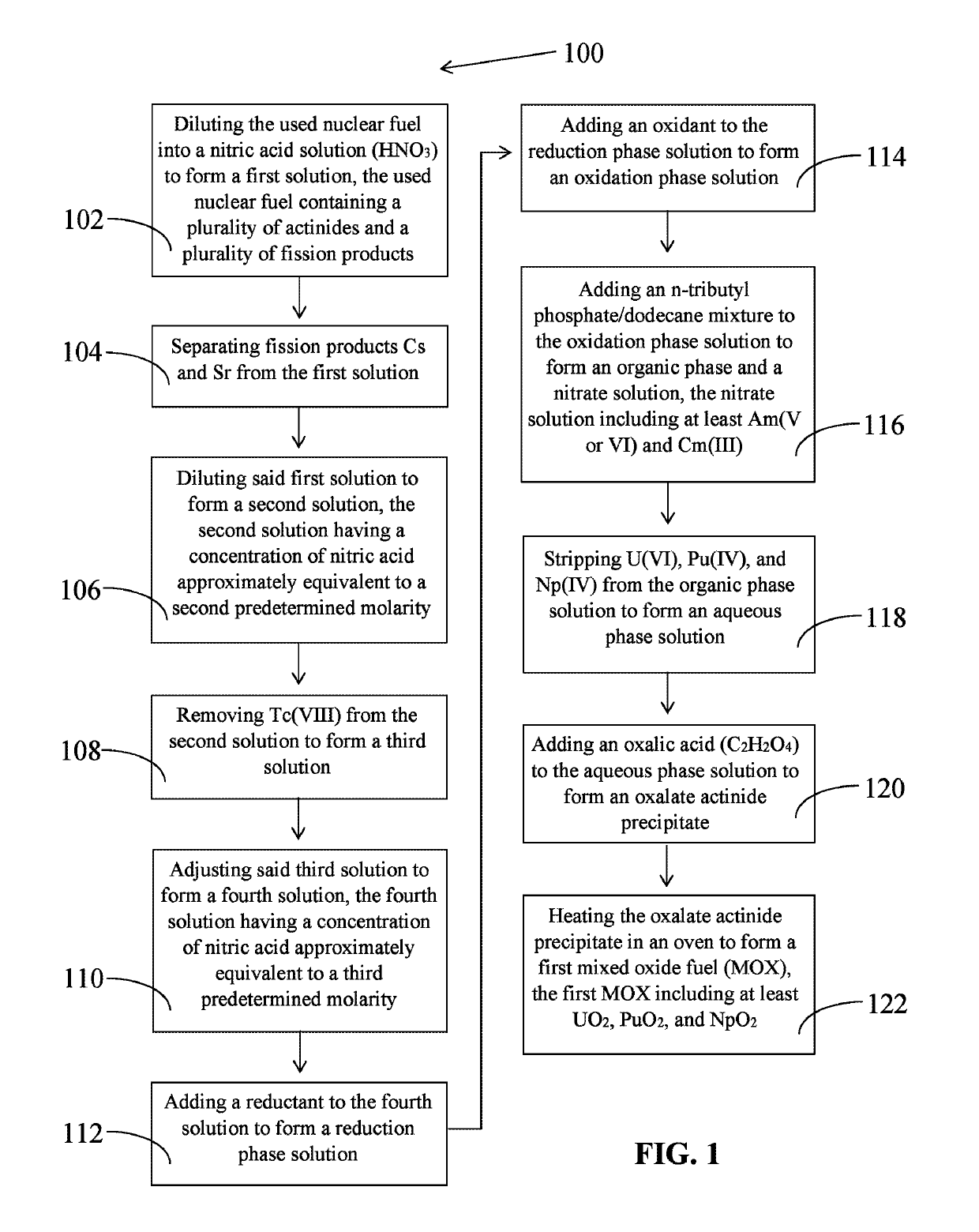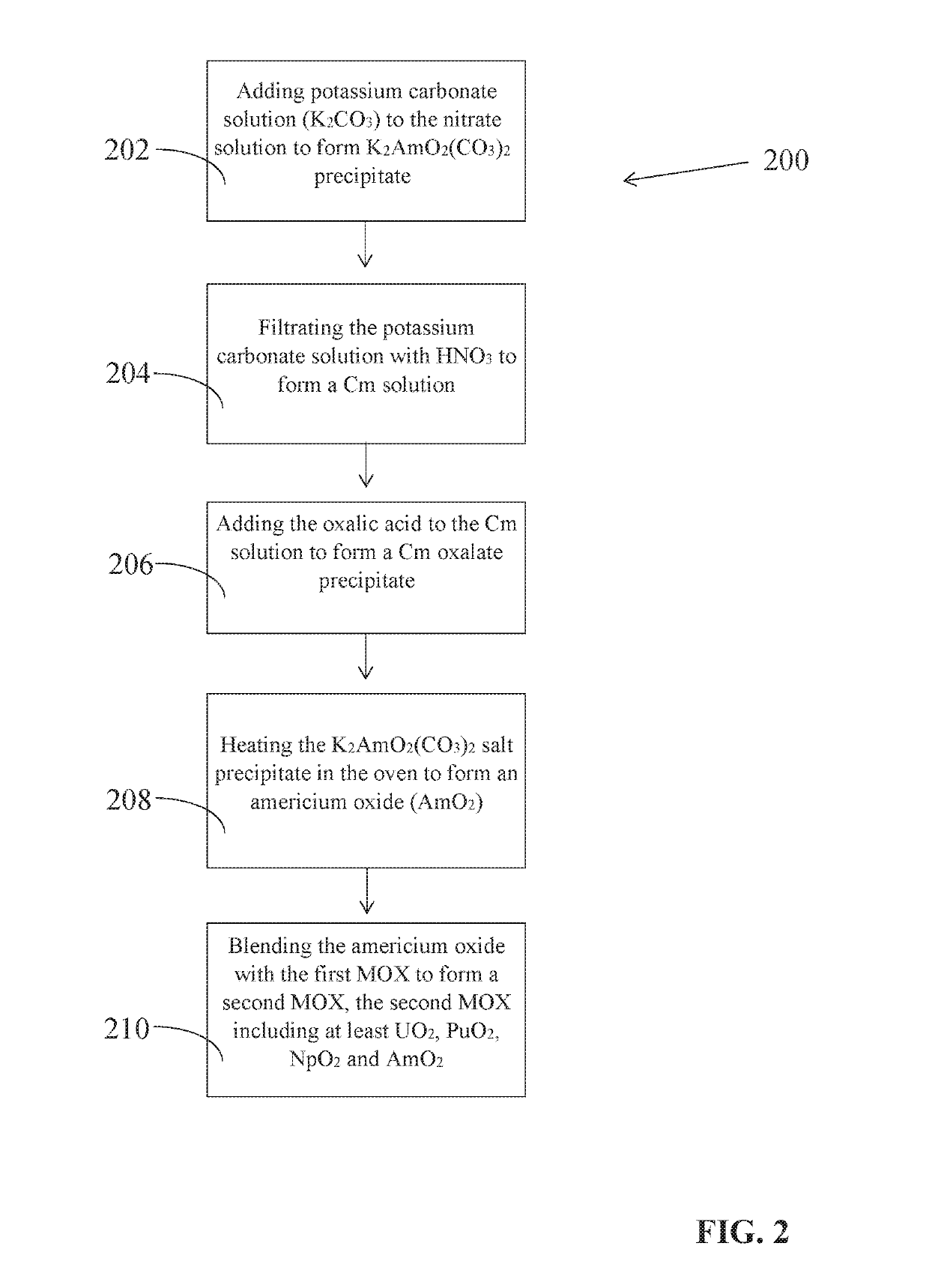Reduction-oxidation of actinides extraction process (ROANEX) for used nuclear fuel recycling
a technology of actinide extraction and recycling process, which is applied in the direction of nuclear elements, uranium oxides/hydroxides, greenhouse gas reduction, etc., can solve the problems of urex (uranium refining by extraction) method no longer being a viable system for actinide recovery and fission product separation, and the method cannot be performed in the u.s
- Summary
- Abstract
- Description
- Claims
- Application Information
AI Technical Summary
Benefits of technology
Problems solved by technology
Method used
Image
Examples
Embodiment Construction
[0014]FIG. 1 is a schematic block diagram illustrating the ROANEX method 100 according to the invention.
[0015]In step 102, used nuclear fuel is diluted in nitric acid (HNO3) to form a first solution. The used nuclear fuel contains a plurality actinides and a plurality fission products. Actinides are any of the fifteen metallic elements from actinium to lawrencium. Actinides present in the used nuclear fuel may include U(VI), Am(III), Pu(IV,V,VI), Np(IV,V,VI), and Cm(III). The most abundant actinides in used nuclear fuel, including thorium (Th) based reactors, are U and Pu. Fission products are any of the elements from zinc through the lanthanides. Fission products present in used nuclear fuel may include Cs, Sr, and Tc(VII). In alternate embodiments used nuclear fuels may have different chemical compositions. For example, Th-232 fueled nuclear reactors will breed U-233 and produce Pa-231 via (n,2n) reactions with Th-232. Natural spent uranium fuel produces U-238, U-235, and traces U...
PUM
| Property | Measurement | Unit |
|---|---|---|
| Temperature | aaaaa | aaaaa |
| Temperature | aaaaa | aaaaa |
| Fraction | aaaaa | aaaaa |
Abstract
Description
Claims
Application Information
 Login to View More
Login to View More - R&D
- Intellectual Property
- Life Sciences
- Materials
- Tech Scout
- Unparalleled Data Quality
- Higher Quality Content
- 60% Fewer Hallucinations
Browse by: Latest US Patents, China's latest patents, Technical Efficacy Thesaurus, Application Domain, Technology Topic, Popular Technical Reports.
© 2025 PatSnap. All rights reserved.Legal|Privacy policy|Modern Slavery Act Transparency Statement|Sitemap|About US| Contact US: help@patsnap.com


